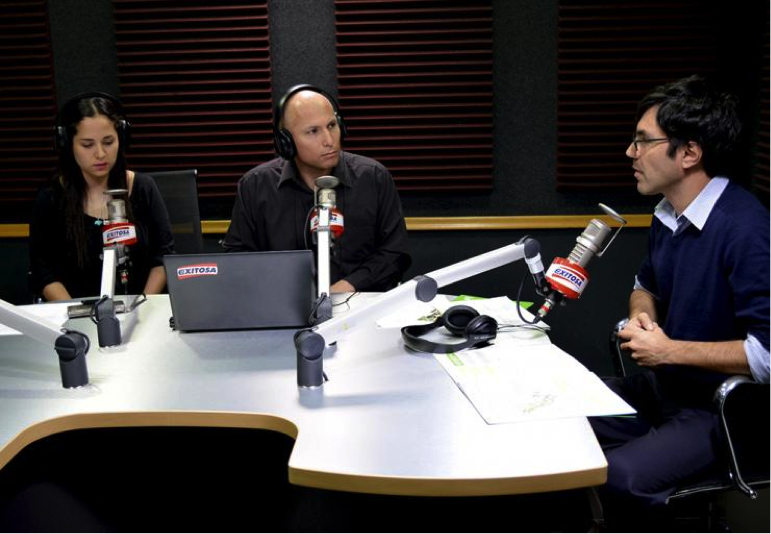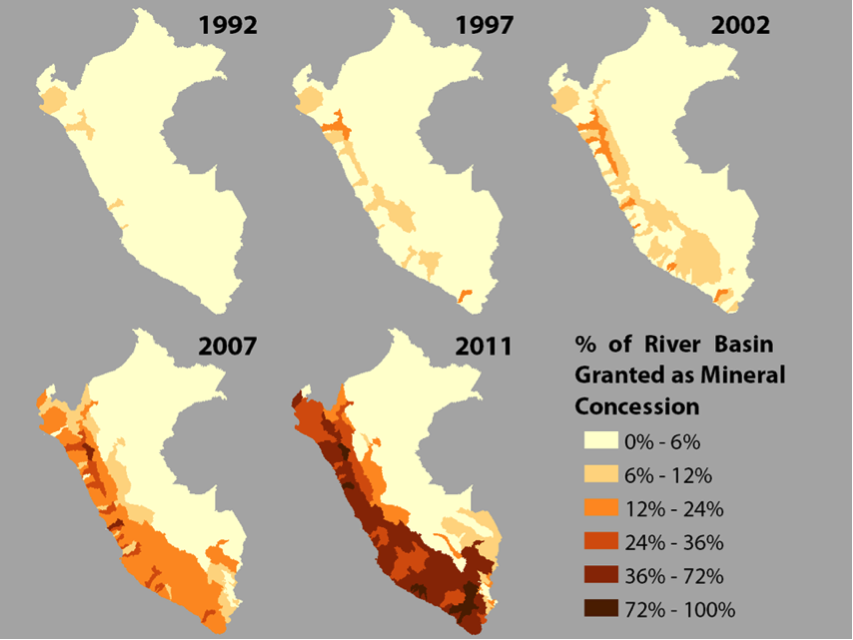Overlapping Geographies in Peru: Mining, Gas, Oil and Food Production
C.G.A. director Marco Millones recently visited his native Peru to present the results of an environmental policy research project that he participated in with colleagues, Anthony Bebbington, Nicholas Cuba and John Rogan from Clark University in a partnership with Oxfam America. The project, which is currently being reanalyzed by student researchers here at William & Mary, looks at the contentious issue of competing demands for water and land resources as well as ongoing conflicts between farmers and extractive companies. Agriculture and mineral and hydrocarbon extraction are two vital parts of Peru’s economy. In fact, mineral prices have been a main driver of Peruvian economic growth over the last couple of decades while agriculture, which remains the largest economic sector, has been a traditional element of Peruvian society for ages.
Utilizing mostly publicly available data, the team used geospatial visualization and analysis to create a series of maps that estimate areas where overlaps and potential conflicts over land and water resources might exist. The results of the analysis showed that, primarily, there has been significant growth in extractive economic activities within the country in the last 15 years and that there are many geographic overlaps between these areas of extraction and agricultural activities and natural resources. On a related note, protected areas, mainly indigenous territories and conservation lands, had less overlap with extraction areas (although this could change with the loosening of environmental regulations). Nonetheless, the existence of these overlaps suggests that extractive industries’ needs have been prioritized over other economic livelihoods like agriculture. Project maps gave little indication that the government had put much planning into ensuring that expanded extractive activities would not conflict with food production or water resources in surrounding areas. Lastly, it appears that the rural and indigenous communities being affected by the consequences of extractive industries have little input on national territorial planning.
While in Peru, Millones talked about his findings with policy makers and completed media interviews. The image above is from an interview that Millones had with the ‘La Exitosa’ radio station in Lima. Further information on the project can be found in this recent peer reviewed journal publication and in the corresponding Oxfam America report.
 Skip to main content
Skip to main content


